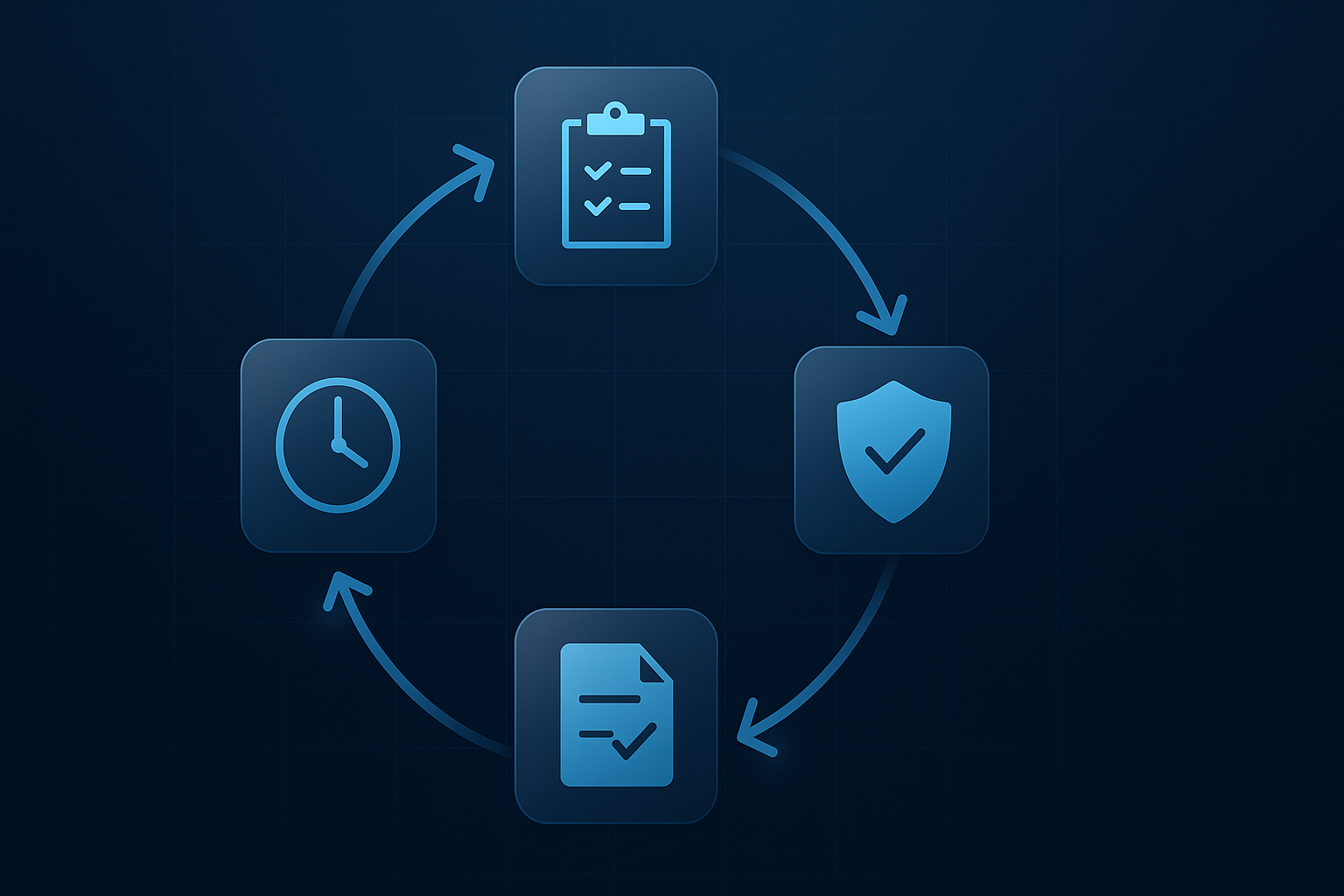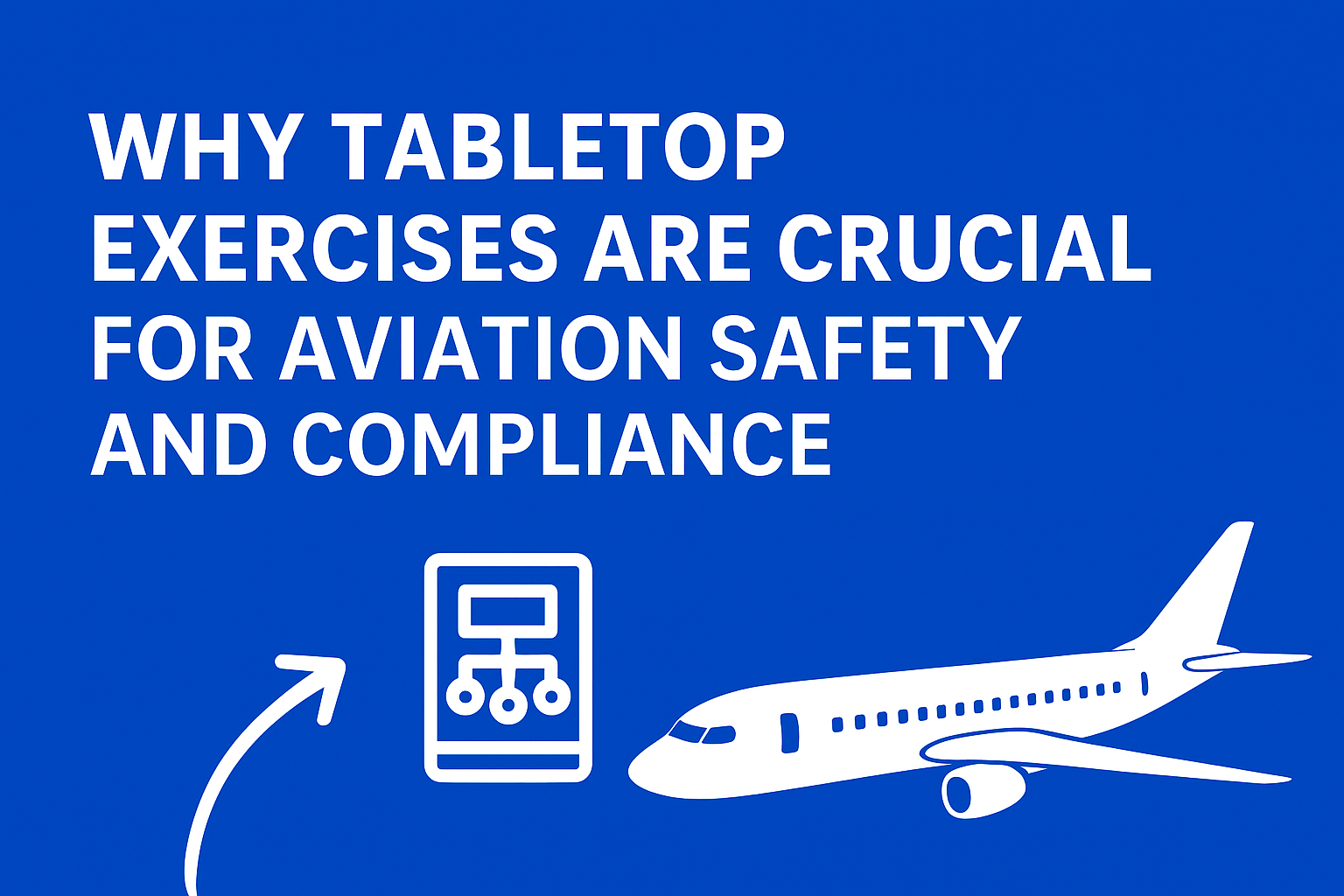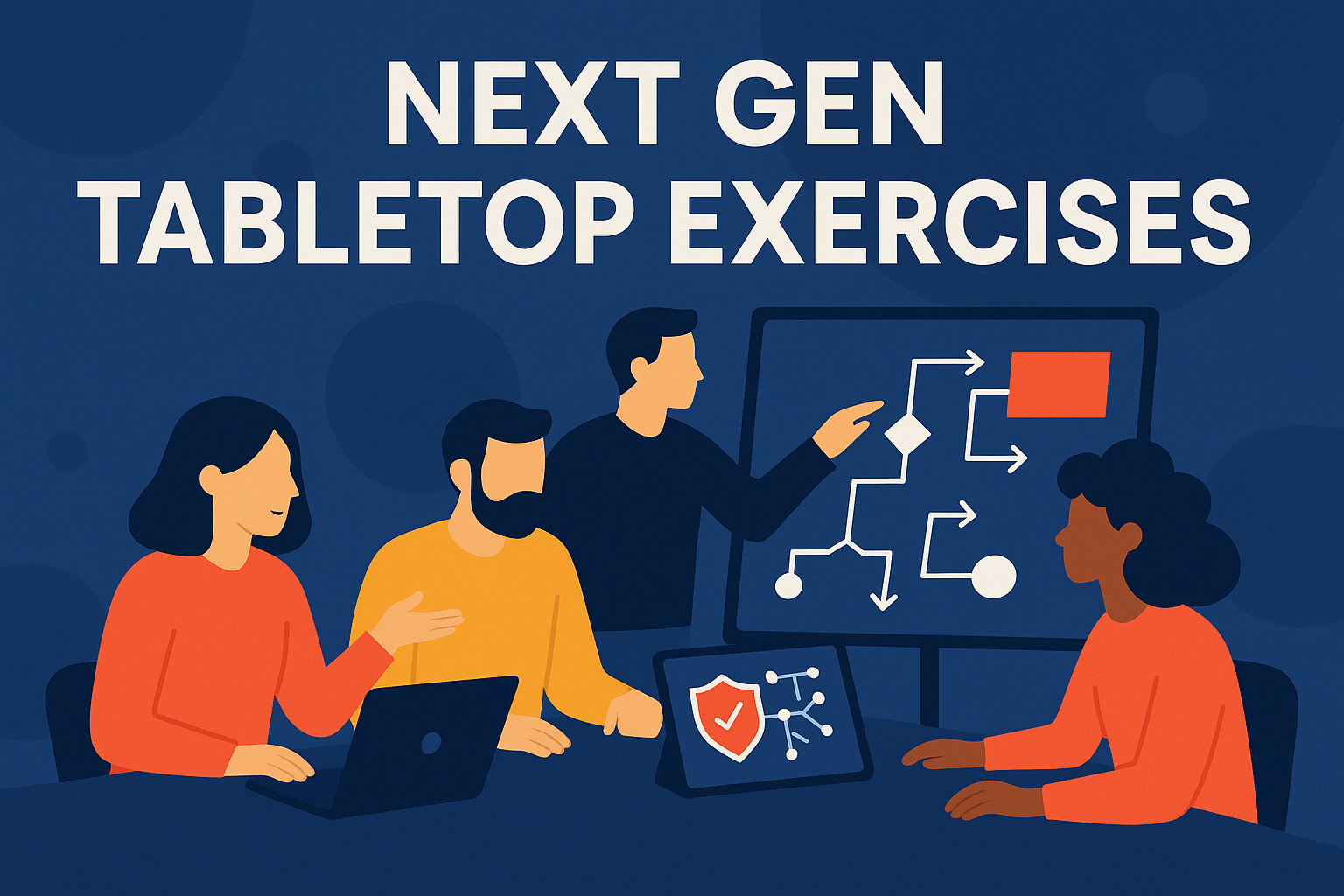Breaking Down Silos: Making Business Continuity Collaborative
From Siloed Plans to Shared Performance
Business continuity (BC) and risk management only work when people do—across operations, technology, finance, HR, legal, communications, and the executive team. Yet many programs still live in silos: plans are fragmented, playbooks gather dust, and lessons learned never translate into real change. The result? Slow decisions, missed handoffs, and extended downtime.
Collaboration is the multiplier. When teams write, rehearse, and refine the same playbooks—and when after‑action insights feed directly into improvements—continuity becomes repeatable performance. This is where Opsbook comes in: a collaborative platform purpose-built to unify playbooks, exercises, and AARs so organizations can prepare together and execute with confidence.
The True Cost of Silos in Risk & Continuity
What Silos Look Like in Practice
- Separate team plans with overlapping assumptions and conflicting priorities.
- Static documents stored in different places, with unclear owners and versions.
- After‑action notes captured in email or slides—rarely shared, seldom tracked.
- Drills focused on single departments rather than end-to-end scenarios.
Why Silos Hurt When It Matters
- Decision drag: critical minutes lost clarifying roles and approvals.
- Duplicated effort: multiple teams chase the same tasks in parallel.
- Missed handoffs: upstream fixes create downstream issues.
- Knowledge decay: lessons aren’t codified into the next response.
The Collaboration Mindset
- Shared objectives and a common language (RACI/RASCI) for who does what.
- Transparent workflows where everyone sees the same truth in real time.
- Psychological safety: blameless reviews that invite candor and learning.
- Leadership sponsorship: cross-functional governance that removes blockers.
After‑Action Reporting (AAR): Turning Lessons into Lasting Improvements
What an AAR Is (and Isn’t)
An AAR is a structured, blameless review conducted after an incident, drill, or exercise. It captures: what was supposed to happen, what actually happened, what went well, what needs improvement, and—most importantly—concrete actions to close gaps. It is not a postmortem witch hunt or a transcript of events.
Best Practices for Collaborative AARs
- Run a rapid “hot wash.” Debrief while the event is fresh; time-stamp key moments on a shared timeline.
- Invite the whole system. Include operations, IT, security, facilities, HR, finance, legal, and comms.
- Ground in evidence. Use logs, dashboards, and message trails—not just memory.
- Name root causes. Ask “why” until you reach process, skill, tooling, or governance gaps.
- Assign owners and dates. Each improvement has a single accountable owner and a due date.
- Track to closure. Action items live where teams work, with reminders and status visibility.
- Feed the loop. Update playbooks and training; re-exercise to confirm the fix works.
How Opsbook Makes AARs Collaborative
- Centralized AAR templates that standardize capture of findings and follow-ups.
- Real-time note-taking and timelines during incidents or exercises, visible to all stakeholders.
- Task assignment with owners and due dates so improvements don’t get lost.
- Dashboards and roll-ups that reveal closure rates and trend themes for leadership.
- Direct linkage to playbooks, ensuring lessons learned become lessons applied.
Collaborative Playbooks: From Static PDFs to a Living Operating System
What Great Playbooks Include
- Triggers and thresholds: when to activate, who declares, and escalation paths.
- Roles & RACI: named owners, backups, and decision rights.
- Decision trees: step-by-step flows for containment, communication, and recovery.
- Comms templates: stakeholder messages, status updates, and media lines.
- Dependencies: systems, vendors, facilities, and data required for continuity.
- Objectives & RTO/RPO: what “good” looks like, by function and time horizon.
How to Build Playbooks Collaboratively
- Co-author across functions. Draft in the open so assumptions are challenged early.
- Version with approvals. Maintain history and signoffs; avoid “mystery PDFs.”
- Role-based views. Give each team the slices relevant to their job-to-be-done.
- Train from the playbook. Make onboarding and refreshers part of BAU.
- Design for drills. Format steps and checklists to be executable under pressure.
How Opsbook Elevates Playbooks
- Role & objective mapping that ties tasks to accountable teams and targets.
- Scenario builder to stress-test playbooks against realistic threats.
- Centralized repository with version history and easy distribution.
- Execution-ready checklists that teams can actually run in an exercise.
- Seamless updates as AAR actions land—your playbooks stay truly “living.”
Preparedness that Sticks: Exercises, Drills, and Continuous Improvement
Right-Sized Exercise Types
- Tabletop (discussion-based): low-risk walk-throughs of scenarios and decisions.
- Functional drills: limited-scope tests of a process or capability (e.g., failover).
- Simulation events: multi-team, time-bound events to pressure-test end-to-end response.
A Repeatable Exercise Cycle
- Plan the scenario, roles, objectives, and success criteria.
- Exercise the playbook with the actual people who will respond.
- Evaluate with evidence-based observations and metrics.
- Improve via assigned actions, then update the playbook.
- Re‑exercise to validate the fix and build muscle memory.
How Opsbook Operationalizes Preparedness
- AI-assisted scenario generation to quickly tailor credible threats to your context.
- Scalable multi-team exercises with real-time facilitation and participation.
- Timeline capture and analytics that surface bottlenecks and decisions.
- Automated reporting for leadership, audit, and regulatory evidence.
- Data-driven insights that feed AARs and refresh playbooks without manual toil.
Governance & Metrics for Collaborative Resilience
Set Clear Accountability
- Form a cross-functional steering group with defined decision rights.
- Appoint single-threaded owners for playbooks, exercises, and AAR action tracking.
- Embed continuity objectives into performance goals for accountable leaders.
Measure What Matters
- Time-to-acknowledge and time-to-decision during events.
- Action-item closure rate from AARs and average days to close.
- Playbook freshness (time since last update) and coverage by critical process.
- Exercise participation & coverage across functions and scenarios.
- Mean time to recover and variance against RTO/RPO commitments.
Use Metrics to Mature the Program
- Trend dashboards drive funding and prioritization.
- Evidence of improvement strengthens audits, certifications, and board reporting.
- Metrics create shared language and incentives across silos.
A 90‑Day Roadmap to Break Silos
Days 0–30: Establish the Foundation
- Inventory existing plans and playbooks; identify duplicates and gaps.
- Define your AAR template and operating cadence (weekly/biweekly triage).
- Prioritize top risks; select one cross-functional pilot scenario.
- Name owners and align on decision rights.
Days 31–60: Build and Validate
- Co-author one priority playbook across all impacted teams.
- Run a cross-functional tabletop with the actual responders.
- Publish the AAR with assigned owners and deadlines.
Days 61–90: Close and Scale
- Close the top action items; refresh the playbook accordingly.
- Re‑exercise the scenario to confirm improvements worked.
- Scale the approach to a second scenario; introduce dashboards and scorecards.
How Opsbook Enables Collaborative Continuity
Plan Together
Create and manage unified playbooks with role mapping and version control in a central repository that everyone can access. Reduce confusion, eliminate duplicates, and make sure each team knows their part.
Exercise Together
Design credible, context-rich scenarios rapidly and run scalable tabletops or simulations. Track participation and decisions in real time so nothing is lost in translation.
Improve Together
Standardize AARs, assign action owners with due dates, and visualize closure rates. Feed every improvement back into playbooks and training so readiness compounds over time.
FAQs
What’s the difference between a playbook and a continuity plan?
A plan defines your overall strategy and scope. A playbook turns that strategy into step-by-step actions for a specific scenario or capability, with roles, triggers, decision trees, and communication templates.
How often should we run tabletop exercises?
Run at least quarterly for critical scenarios, with targeted functional drills in between. Increase frequency after major changes—new systems, vendors, facilities, regulations, or leadership.
How do we keep playbooks “living” and current?
Assign owners, set a review cadence, link AAR actions directly to playbook updates, and re‑exercise to validate changes. Track “playbook freshness” as a KPI.
What makes an AAR actionable (vs. a recap)?
Specific owners, due dates, measurable outcomes, and clear links to process, tooling, or training changes—plus visibility on progress until closure.
Which metrics prove our program is improving?
Look for faster acknowledgment/decision times, higher AAR closure rates, fresher playbooks, broader exercise participation, and reduced recovery times against RTO/RPO.
Collaboration is the Shortest Path to Resilience
Business continuity succeeds when teams plan, practice, and improve together. Breaking down silos turns isolated documents into a living operating system for response and recovery. With Opsbook, you can unify playbooks, run scalable exercises, and turn every AAR into real progress—so your organization is ready when it matters most.
Plan your next cross-functional tabletop and AAR with Opsbook—and experience how collaborative continuity reduces risk, speeds recovery, and builds confidence across the business.






